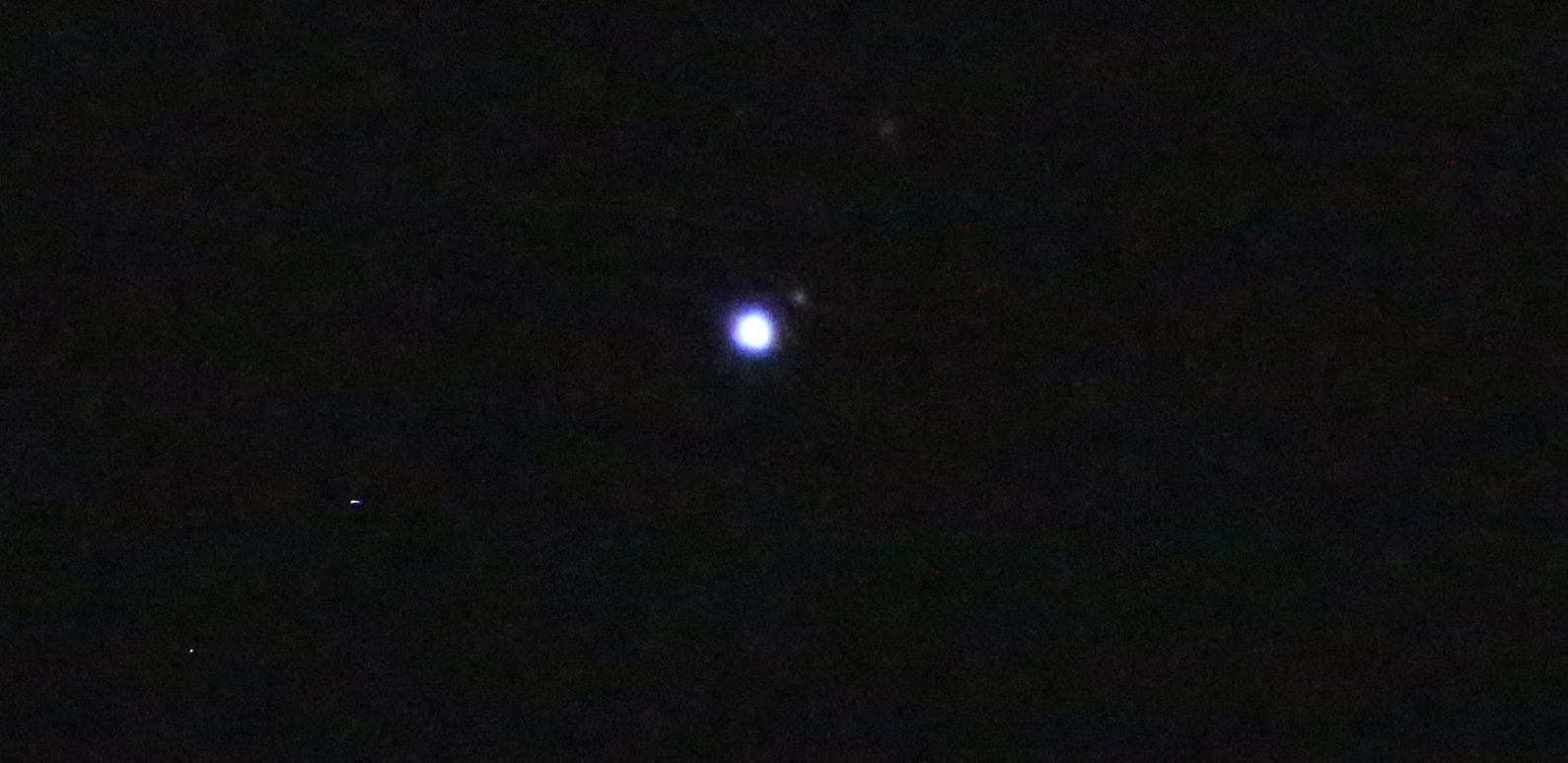
Capturing Neptune & Triton with a Small Telescope
September 2014 :
Mars and Saturn, which have been part of our sky since early Spring, are now departing in the west, leaving us with a vast expanse of sky devoid of bright planets, until Jupiter rises amongst the stars of Cancer, the crab before dawn. While we may not have any bright planets to view in our evening sky, this is the time of year that we can turn our gaze to our outermost planet, Neptune.
Neptune is the only planet not visible to the naked eye (Uranus can be seen under the right conditions) but it doesn't require sophisticated equipment to track it down. With a good finder chart and a pair of 50mm binoculars it should be easy to spot as long as the Moon is not nearby.
Neptune's most revealing feature will be its blue hue, owing to methane gas in its upper atmosphere absorbing the red wavelengths of sunlight. Even in large telescopes, don't expect distant Neptune to reveal very much surface detail, but under steady skies you may notice slight limb darkening on its tiny 2.4 arcsecond disk, giving it a distinct 3-dimensional appearance.
One enticing thing Neptune does offer, however, is its largest moon Triton. This large moon, similar in size and composition to Pluto, is within reach of a 12-inch telescope under ideal seeing conditions. At its closest, Triton shines at magnitude 13.5 and can be seen as far away as 16 arcseconds from Neptune.
If your telescope isn't large enough to spot Triton but you do have a tracking mount and a camera, you can try to capture an image of it.
The image above was captured with a 130mm telescope operating at f/24 with a Canon SLR camera and an 8 second exposure at ISO 12800. Triton is clearly visible above and to the right of Neptune.
Can you capture Triton with a smaller telescope?



